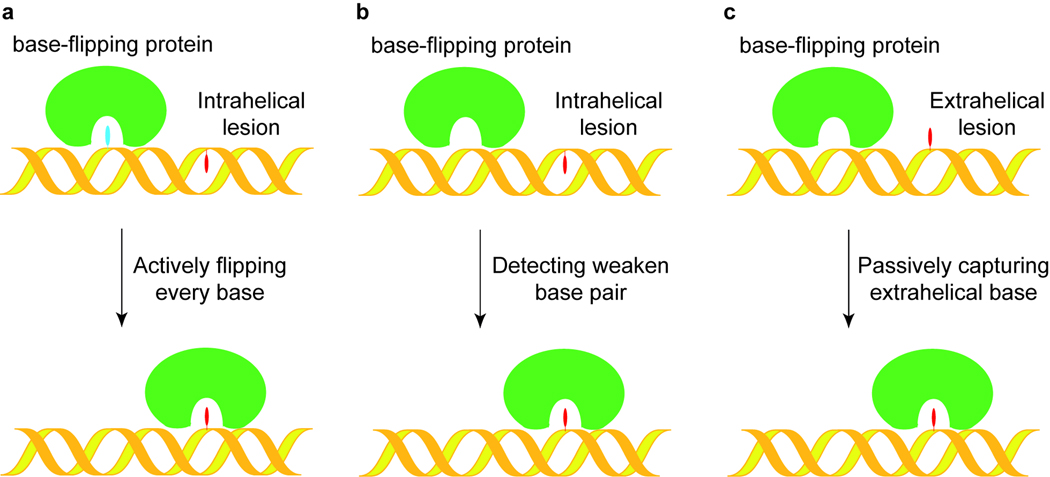Figure 2.
Proposed damage searching and base flipping mechanisms for DNA repair proteins. a In this model, the protein actively flips every base out and checks it in its active site pocket until the lesion is located. b Proposed damage searching model by detecting weakened or non Watson-Crick base pairs. The repair protein would distort the double helical structure of DNA and selectively flip out an unstable base. c DNA repair protein passively captures a transiently extrahelical lesion.

